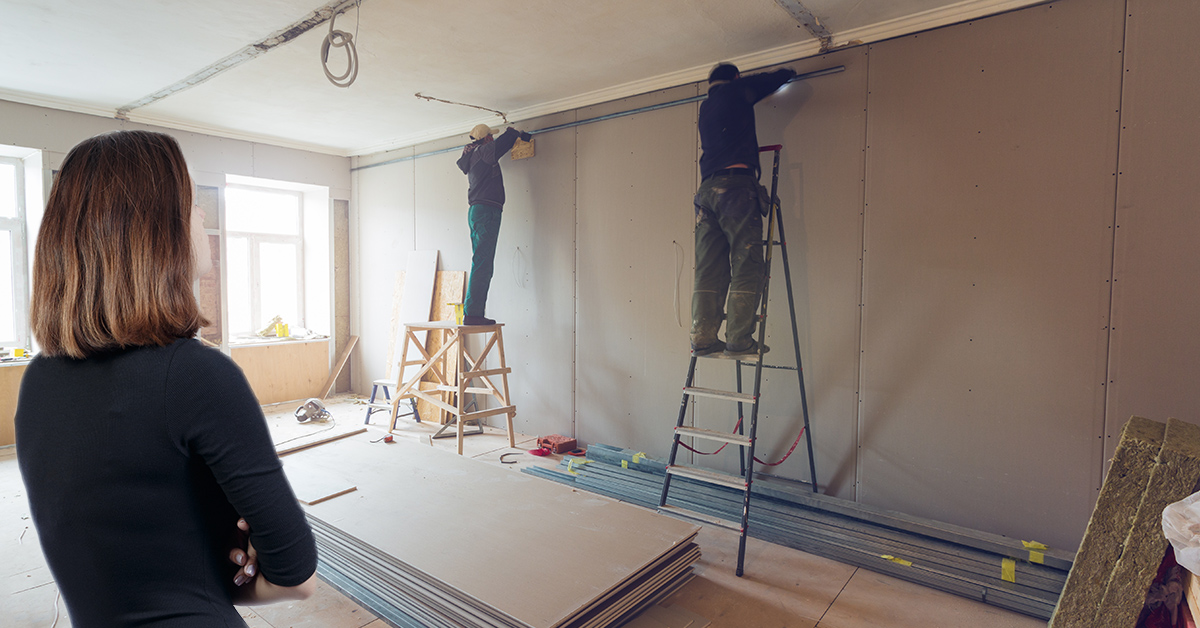It is difficult from the outside to assess the amount of money spent on renovating and updating a single home over time. It’s even harder to understand what the dollars spent on these renovations actually mean for the value of that home.
U.S. homeowners spend about $400 billion annually to remodel and update their homes, according to the Joint Center for Housing Studies of Harvard University. The majority of that money is spent on materials with a bit less going toward labor. There is a direct correlation between material costs and labor costs: the more expensive the material, the more expensive the labor
Automated valuation models (AVMs) provide a snapshot of home values by neighborhood, but the money spent on renovations and remodels are often hidden from these models. Equity gains made through these renovations can improve the value of a home and have a direct impact on the home’s loan-to-value (LTV) ratio.
Mortgage originators will want to understand when these renovations are occurring. When a homeowner renovates their property and improves its value, they may seek to refinance and may do so with a competing originator. With this insight, originators gain a prime opportunity to retain and grow existing client relationships throughout the entire life span of homeownership, from mortgage to resale.
Continuous relationship
The relationship between an originator and a homeowner is often intermittent rather than continuous. Past clients receive mailers and other marketing materials, but a homeowner may not need the service of an originator for years after the first loan is closed.
Still, good mortgage brokers and loan officers have an advantage for retaining future home lending business from the same homeowner, including refinances, and can help the client buy a new home or pay to remodel an existing one. Knowing the intentions of previous clients allows the originator to continue to nurture and own the relationship, thus providing relationship continuity.
Originators who understand their past clients’ intentions can better educate these borrowers in the future. This allows the originator to have an intelligent and informative relationship with their clients, so they can indirectly solicit their loyalty.
One of the ways to educate clients is to understand how investments in home improvements impact the value of the home. More importantly, how does that investment change the LTV ratio?
Opportunity and risk
Remodels or renovations often improve a home’s value. Bank and nonbank lenders, as well as the originators who work with them, will want to know when that happens. There’s opportunity and risk at these moments.
There is a tremendous amount of hidden equity in many homes across the U.S. that is not visible to mortgage lenders, servicers or other parties. AVMs don’t recognize the extent of investment into every remodeling project and thus will not be entirely accurate.
A Kukun proprietary study found that more than $3.5 billion was spent in 2018 to remodel homes in select cities in Georgia and California. The equity gains were substantial. The study looked at 140 homes that underwent renovations in Georgia. Of these, 127 saw equity gains and achieved a lower LTV ratio. On average, these homes had value increases of $135,500 or a 17.5% gain, according to the study. In California, the study examined 253 homes that underwent remodeling or renovations. Of these, 219 gained value, with an average gain of $118,600 or 8%.
This type of data offers insight for lenders and mortgage companies into the potential value changes to a property. In turn, this impacts their ability to proactively reach out to clients with the expertise needed to show them how to increase the property value while offering them the best loan options for these remodels.
The study also shows that while many renovations increase a home’s equity, there are some projects that decrease it. Again, having access to the right data is key in a lender’s role as an asset adviser for their clients.
Improving value
Not all projects are equal, of course. People do more kitchen and bath projects than other rooms, according to the Kukun study. The good news is that kitchens and bathrooms provide a great return on investment. What is more interesting is that while kitchens and baths tend to have a positive return on investment, they are not necessarily the best projects for improving the value of a home.
What the data supports is that one of the best ways to increase the return on investment for a home is through projects that increase the size of the house, such as adding a bedroom. There is a balance between the cost of that project and the actual return on investment.
A client could go into a remodel with the right idea but make poor decisions along the way. This will decrease any potential gains. For instance, although adding a room could increase the home’s value, a homeowner could see similar benefit by knocking down a wall to open up space. This has a similar return-on-investment outcome with fewer overhead costs. Another mistake that clients can make is by choosing to use overly expensive materials, which naturally cut into the value-added margins.
There also are some remodeling projects that are shown to have little or no impact on LTV. Again, having the data behind these projects will help originators guide their clients in the right direction. Adding a new garage to a home that does not already have one, for example, will increase the return on investment but remodeling an existing garage will not.
The degree of impact on return on investment — either negative or positive — varies from city to city. Many times, a homeowner opts to remodel from a lifestyle perspective rather than to increase the home’s value. When lenders are mindful of these subtleties of impact, and they can present alternative options that meet the homeowner’s desire to remodel today (or their eventual desire to sell), they are better equipped to address client concerns and establish themselves as a trusted resource.
● ● ●
When lenders and originators have this information at hand, they gain access to the greater market trends within their region, as well as deeper insights into the needs and potential needs of their clients. They are able to act on this data to keep existing clients engaged.
Lenders and originators should establish themselves as authorities that have clients’ best interests in mind. They should be able to offer detailed advice for how a client can improve their home with the highest possible return on investment. In doing so, they will be more trusted as a provider of the loan needed to meet these goals. Once a client trusts their originator as the person to help them achieve these goals, they are less likely to look elsewhere for future home loan needs. ●
Author
-
Raf Howery is the founder and CEO of Kukun, a data and analytics platform for home remodeling and property conditions that serves the mortgage, real estate, insurance and retail industries. Kukun was founded in 2014 in Menlo Park, California. Howery has built more than 10 complex analytics and orchestration platforms for Kukun, and for his previous clients in data- and analytics-intensive industries. Visit Kukun at mykukun.com.
View all posts







